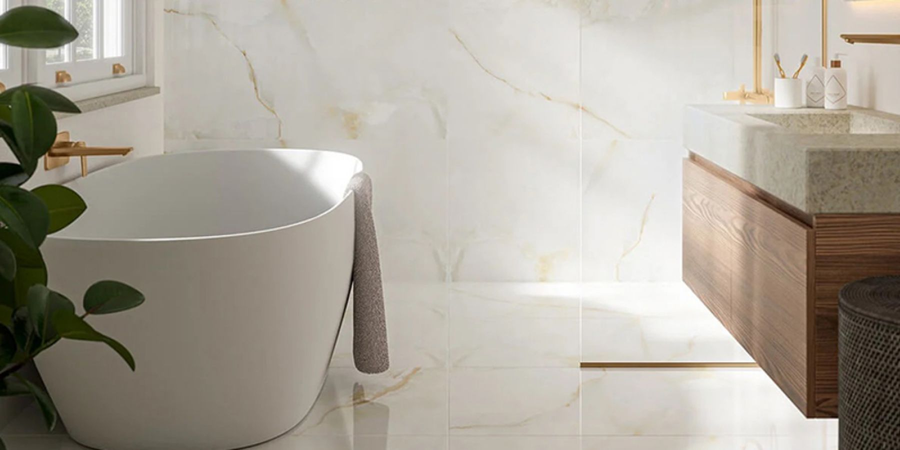
Whether you're planning to refresh your bathroom or kitchen with a brand-new set of tiles or simply need to replace a few cracked or worn pieces, we understand that choosing the right tiles for your home renovation can be challenging. At Stone Superstore, we’re here to help make that decision easier.
After all, not only do you want to pick a tile style that complements your desired home aesthetic, but you should also be sure that it’s suitable for the surface you’ll be installing it on.
So, what do you do if you find a set of floor tiles that you think would also look great on your wall? Can floor tiles be used on walls? And can you use wall tiles on the floor as a gentler alternative? Are they actually interchangeable?
To help answer these questions, we’ve gathered all the information you may need to know about using floor tiles on walls and vice versa, including what to consider if you’re planning on adhering them to their opposite surface.
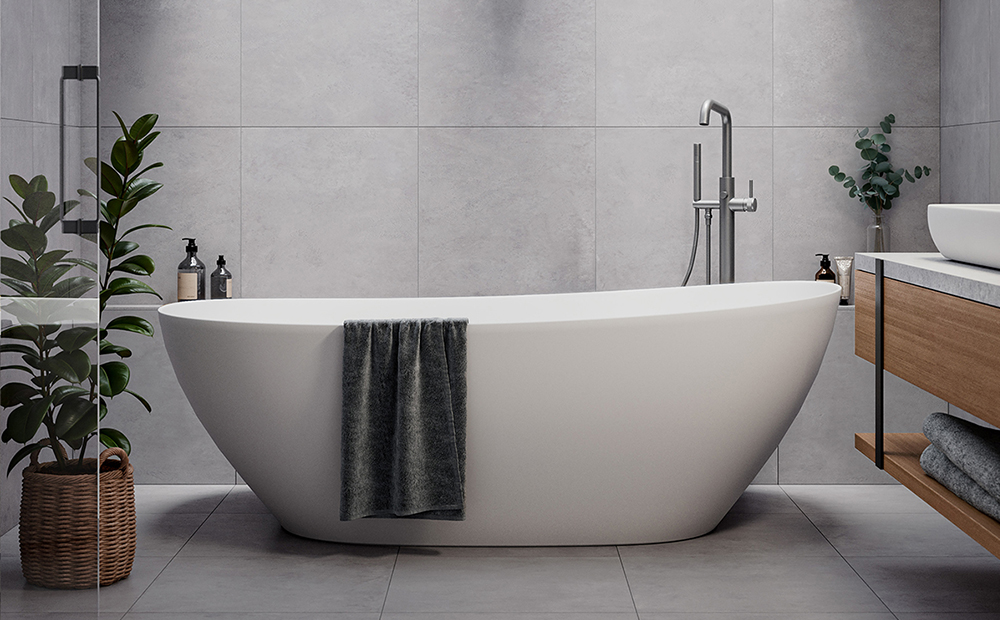
Cementi Dove Concrete-effect Porcelain
What’s the difference between floor and wall tiles?
First things first, let’s touch on the differences between floor and wall tiles and what sets them apart because, while you might think each tile type is the same, there can be some key differences that make them better suited to their given purpose.
For starters, floor tiles are often larger than their wall counterparts, but more importantly, they can be much thicker. This thickness is there to increase the durability of the tiles, something necessary to stop them from cracking under constant foot traffic or the weight of appliances. Wall tiles, on the other hand, tend to be thinner and therefore lighter.
Besides this, the other major difference between wall and floor tiles lies in their texture. Wall tiles are usually smooth and rounded at the edges, making them ideal for forming continual wall patterns, while floor tiles are often textured to provide better grip underfoot.
Can floor tiles be used on walls?
Usually, yes! The nature of floor tiles tends to make them perfectly fine to be used as wall tiles, and their textured surface can make for a striking and contemporary design that lends an interesting, tactile feel. Their enhanced toughness also means they won’t crack if knocked – just make sure to check if your wall structure can withstand the added weight, and use the right adhesive to secure them properly to the wall.
Can you put wall tiles on the floor?
Although you can use floor tiles on your wall, the same cannot always be said for using wall tiles as flooring. Their thinner and fragile nature means they’ll most likely crack after a short while, but more importantly, their smooth nature provides less grip, making them a slip hazard when wet.
In most cases, we would advise against using wall tiles for your floor, however be sure to check the technical advice of your chosen tile, as some more high-performance tile materials mean they can be suitable for both walls and floors.
Why might you want to use the same tiles for your walls and floors
There are several key reasons to consider using floor tiles on walls, such as achieving a cohesive and unified look throughout your space.
Although you’ll be able to find many floor and wall tiles out there that are a close match to each other, for a look that’s practically seamless, you simply can’t beat using the exact same tiles on your floors and walls.
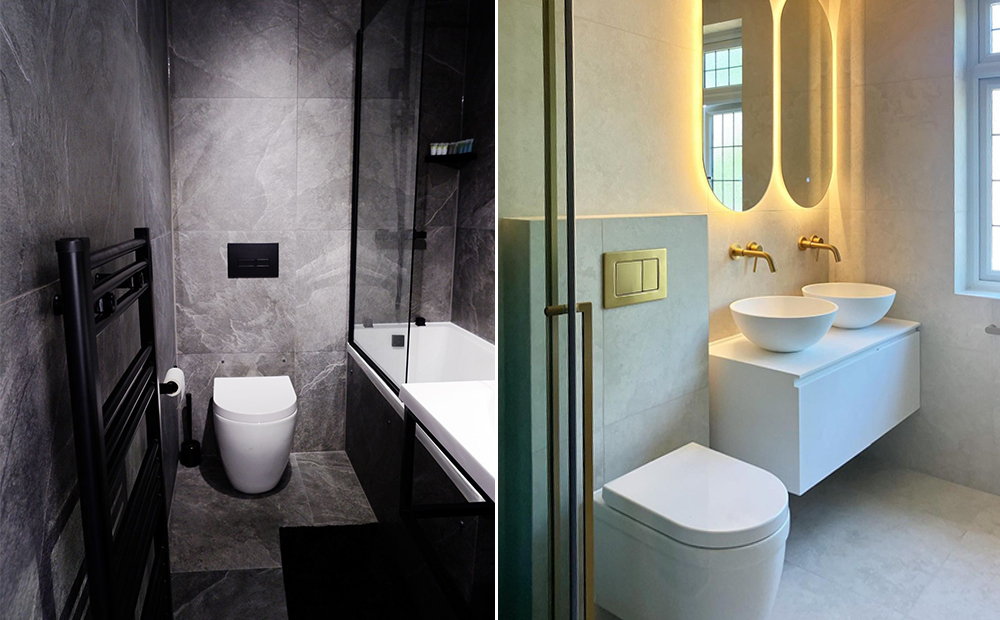
Left: Brazilian Slate Nero Porcelain, Right: Cementini Bianco Porcelain
Not only that, but the added durability and stain-resistance of floor tiles makes them an excellent tiling choice in rooms like your kitchen or utility rooms where accidental wall knocks and spills are a common occurrence.
Finally, because floor tiles are often much bigger than standard wall tiles, they can go a long way toward making a space look larger than it actually is, by having a reduced number of grout lines, making them ideal for smaller bathrooms or areas of the home that feel more compact.
What materials should you consider when using floor tiles on walls?
If you are thinking about using floor tiles on walls, what sort of material should you consider? To help you get a feel for which style might be best for your needs, here are some insights into what each tiling material we provide has to offer:
1. Natural stone tiles
Natural stone tiles are one of the most traditional options that offer an authentic, organic aesthetic throughout your home. Not only is it heavy and hardwearing, but its range of colours makes it somewhat of a timeless classic, which is why it makes such a good option for floor tiles.
But that doesn’t mean stone can’t be used as a wall tile. In fact, there are numerous types of softer, thinner-cut stones out there that are perfectly suited for this role. A typical example of this is our marble-effect tiles. We’ve had customers use this type of stone throughout key areas of their homes, both on floors and walls and it looks fantastic!
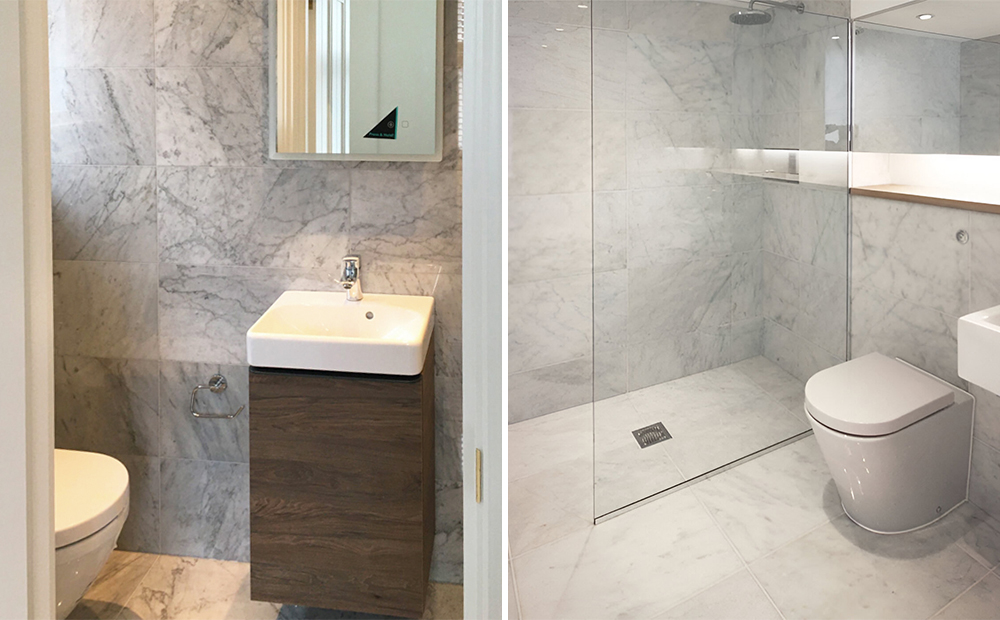
Left: Bianco Carrara Marble, Right: Ibiza Bianco Marble
Of course, natural stone tiles come in a range of finishes, from polished, natural finish and honed. Honed tiles have a satin finish that is soft to the touch, beautifully enticing when used on a wall while being smooth underfoot.
2. Polished porcelain tiles
The classic bathroom tile, polished porcelain tiles give you that sought-after shine that really lends an air of elegance to whatever room they’re used in. Thanks to their durable nature, they’re highly resistant against scratches, moisture and heavy foot traffic, making them perfectly suitable for use on both walls and floors, regardless of their thinner profile.
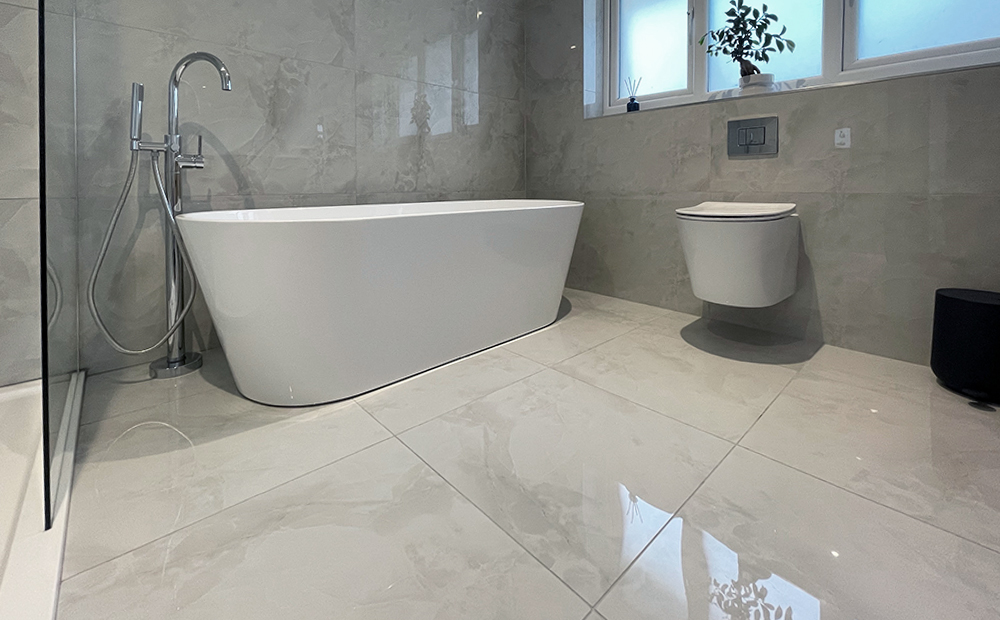
3. Matt porcelain tiles
Much like polished porcelain, matt porcelain tiles are ideal to use on both walls and floors. This highly robust material offers impressive durability, even with a thinner profile, meaning it’s strong enough for use on your floors, yet light enough to install on your walls.
The main appeal of matt porcelain tiles is the wide range of styles, designs and effects, offering ultimate versatility for your home design plans. For example, our wood-effect porcelain tiles can be used anywhere within the home, even in spaces like wet rooms or shower areas, where genuine hardwood would prove problematic.
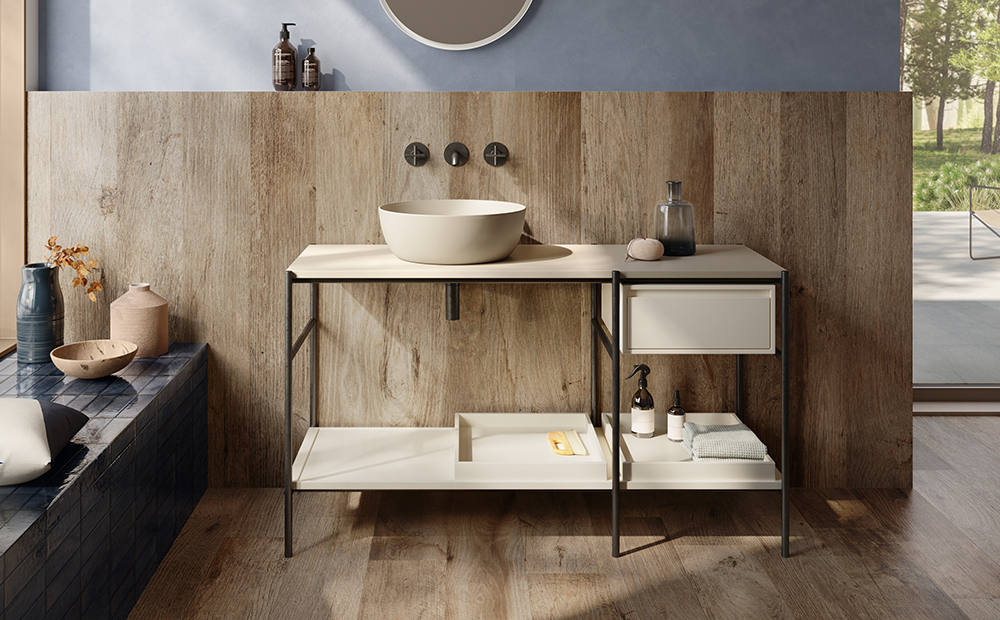
Farmhouse Rustic Brown Wood-effect Porcelain
Key things to consider if you plan to use floor tiles on your walls
If you are set on using floor tiles for your wall, then you’ll need to consider the following aspects to ensure they’re fitted properly and don’t damage your wall:
- Wall strength: as floor tiles are often heavier than typical wall tiles, you need to be sure that the wall you’re adhering them to has the structural integrity to support their weight.
- Wall level: a level wall is essential for a smooth tile finish. Be sure that whatever wall you’re choosing to tile is flat so that none of your tiles awkwardly bulge outward.
- Tile weight: floor tiles can be much heavier than other tile types, so be sure to pick a lightweight material option so they can adhere properly to the wall.
- Proper adhesive: make sure to use the right adhesive when attaching floor tiles to your wall so that they remain in place for years to come.
Find your perfect floor and wall tiles with Stone Superstore
With this information, you should have everything you need to know about using floor tiles on walls and vice versa. As noted above, we would tend to advise against using wall tiles for your floors due to their brittle nature.
For expert advice on choosing the perfect tiles for your home, feel free to contact our friendly team at Stone Superstore today. Our specialists are here to help you bring your dream home to life.
Get in touch today to find out more and don’t forget to browse our other tile installation advice guides on our inspiration blog for more insightful pieces.

